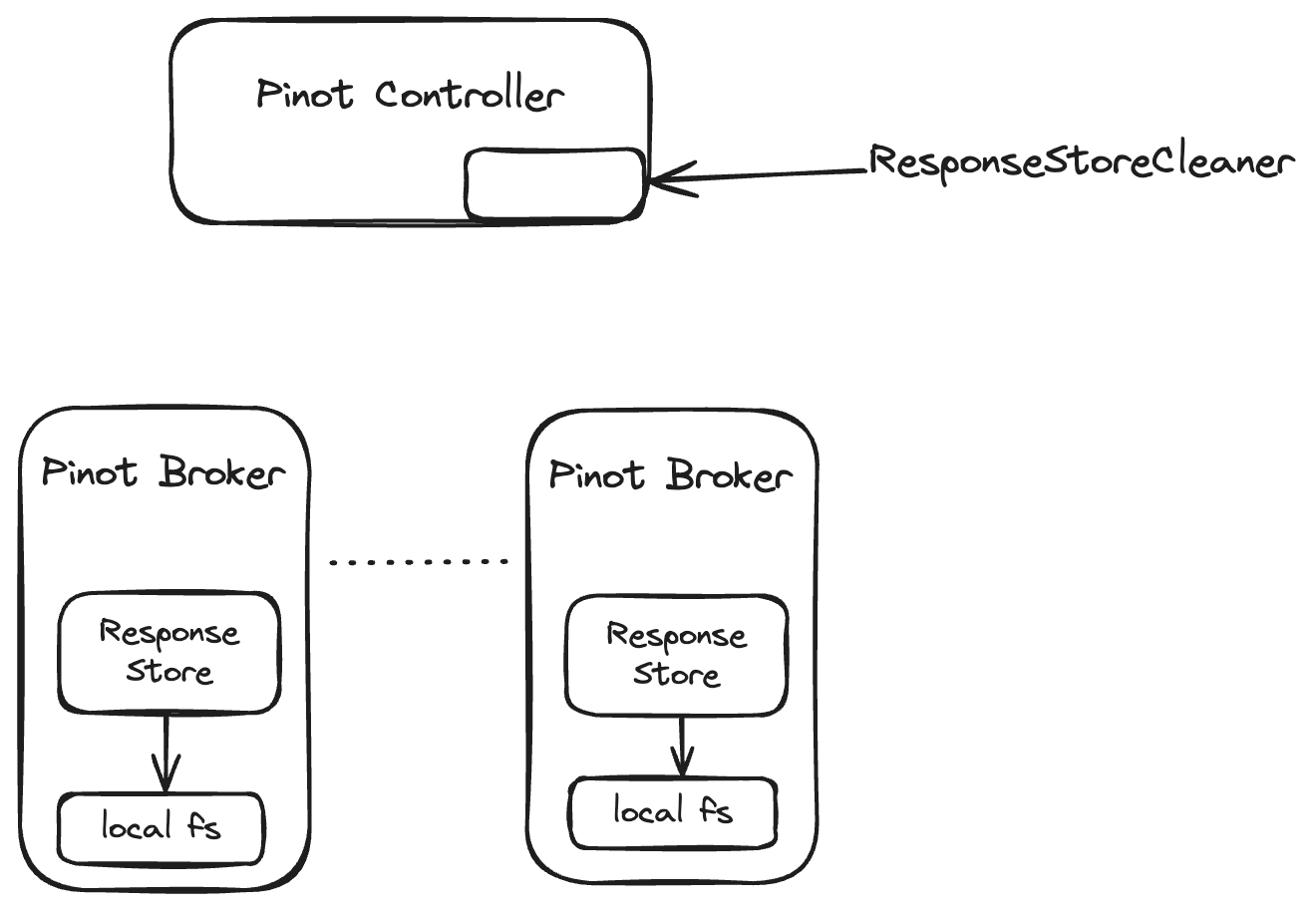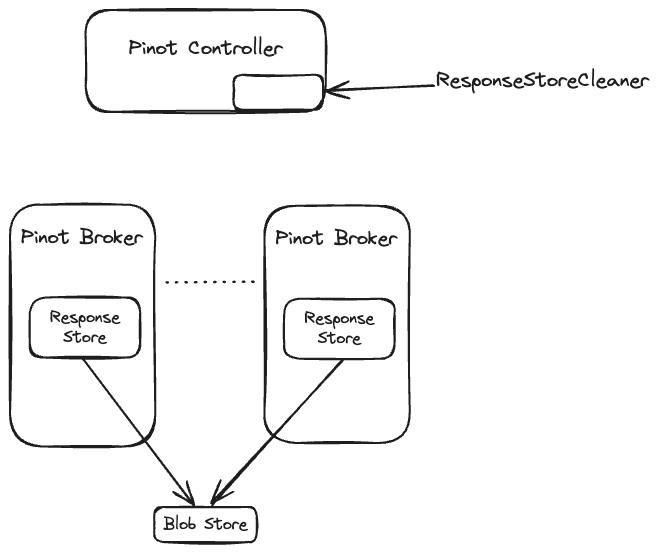Query using Cursors
Cursors allow Pinot clients to consume query results in smaller chunks. With this approach,
clients use less memory because client-side caching of results is not required.
application logic is simpler. For example an app that paginates through results in a table or a graph can get the required slice of results when a page refreshes.
Features of the cursor implementation in Apache Pinot are:
A query is run once and its results are stored in a temporary location. The results are cleaned up after a configurable period of time.
The first page of results is returned in the response.
A client can iterate through the rest of the result set by using the responseStore API.
The client can seek forward and backward as well as change the number of rows in the repsonse.
Cursors can be used with Single-Stage and Multi-Stage Query Engines.
Concepts

Response Store
A ResponseStore stores the results of a query. The ResponseStore is created and managed by the broker which executes the query.
A client should access a response store from the same broker where it submitted a query.
Clients can determine the broker host & port from the client response. An error is thrown if clients try to access ResponseStores from another broker.
A ResponseStore is identified by the requestId of the query.
Any user that has READ permissions on all tables in the query can read from the response store.
New implementations of ResponseStore can be added by implementing the ResponseStore SPI. A specific implementation of the ResponseStore can be chosen at startup by specifying the config parameter pinot.broker.cursor.response.store.type.
Note that only ONE implementation of the ResponseStore can be used in a cluster.
FsResponseStore
FsResponseStore is the default implementation of the ResponseStore. Internally it uses PinotFileSystem. FsResponseStore can be configured to use any filesystem supported by PinotFileSystem such as HDFS, Amazon S3, Google Cloud Storage or Azure DataLake.
By default, the broker's local storage is used to store responses.

ResponseStoreCleaner
This is a periodic job that runs on the controller. A ResponseStore has an expiration time. The ResponseStoreCleaner sends a DELETE request to brokers to delete expired ResponseStores.
User APIs
POST /query/sql
A new API parameter has been added to trigger pagination.
The API accepts the following new optional query parameters:
getCursor(boolean):
numRows (int): The number of rows to return in the first page.
The output above shows response fields that are specific to cursor responses. Other than numRowsResultSet and requestId, fields common with BrokerResponse are not shown for brevity.
numRowsResultSet
Total numbers of rows in the result set. Same as in default BrokerResponse
requestId
The unique ID for the query. It has to be used in subsequent calls to cursor API. Same as in default BrokerResponse
offset
The offset of the first row in the resultTable.
numRows
The number of rows in the resultTable.
cursorResultWriteTimeMs
Time in milliseconds to write the response to ResponseStore. It is applicable only for the query submission API.
submissionTimeMs
Unix timestamp in milliseconds when the query was submitted.
expirationTimeMs
Expiration time of the ResponseStore in unix timestamp in milliseconds.
brokerHost
Hostname or IP address of the broker that manages the ResponseStore. All subsequent cursor API calls should be directed to this broker.
brokerPort
The port of the broker that manages the ResponseStore
bytesWritten
The number of bytes written to ResponseStore when storing the result set.
cursorFetchTimeMs
Time in milliseconds to fetch the cursor from ResponseStore. It is applicable for cursor fetch API.
GET /responseStore/{requestId}/results
This is broker API that can be used to iterate over the result set of a query in a ResponseStore.
The API accepts the following query parameters:
offset (int) (required): Offset of the first row to be fetched. Offset starts from 0 for the first row in the resultset.
numRows (int) (optional): The number of rows in the page. If not specified, the value specified by the config parameter "pinot.broker.cursor.fetch.rows" is used.
GET /responseStore/{requestId}/
Returns the BrokerResponse metadata of the query.
The API accepts the following URL parameters:
requestId (required)
Admin APIs
GET /responseStore
Returns a list of ResponseStores. Only the response metadata is returned.
DELETE /responseStore/{requestId}/
Delete the results of a query.
The API accepts the following URL parameters:
requestId (required)
Configuration
Configuration parameters with pinot.broker prefix are Broker configuration parameters.
Configuration parameters with controller prefix are Controller configuration parameters.
pinot.broker.cursor.response.store.type
file
Specifies the ResponseStore type to instantiate.
pinot.broker.cursor.response.store.file.data.dir
{java.io.tmpdir}/broker/responseStore/data
Directory where the responses will be stored.
pinot.broker.cursor.response.store.file.temp.dir
{java.io.tmpdir}/broker/responseStore/temp
Directory where temporary files will be stored.
pinot.broker.cursor.response.store.expiration
1h
Time To Live for a response store.
pinot.broker.cursor.fetch.rows
10000
The default number of rows in a cursor response.
controller.cluster.response.store.cleaner.frequencyPeriod
1h
The frequency of ResponseStoreCleaner
controller.cluster.response.store.cleaner.initialDelay
random delay between 0-300 seconds
The initial delay before the first run of the periodic task.
Was this helpful?

